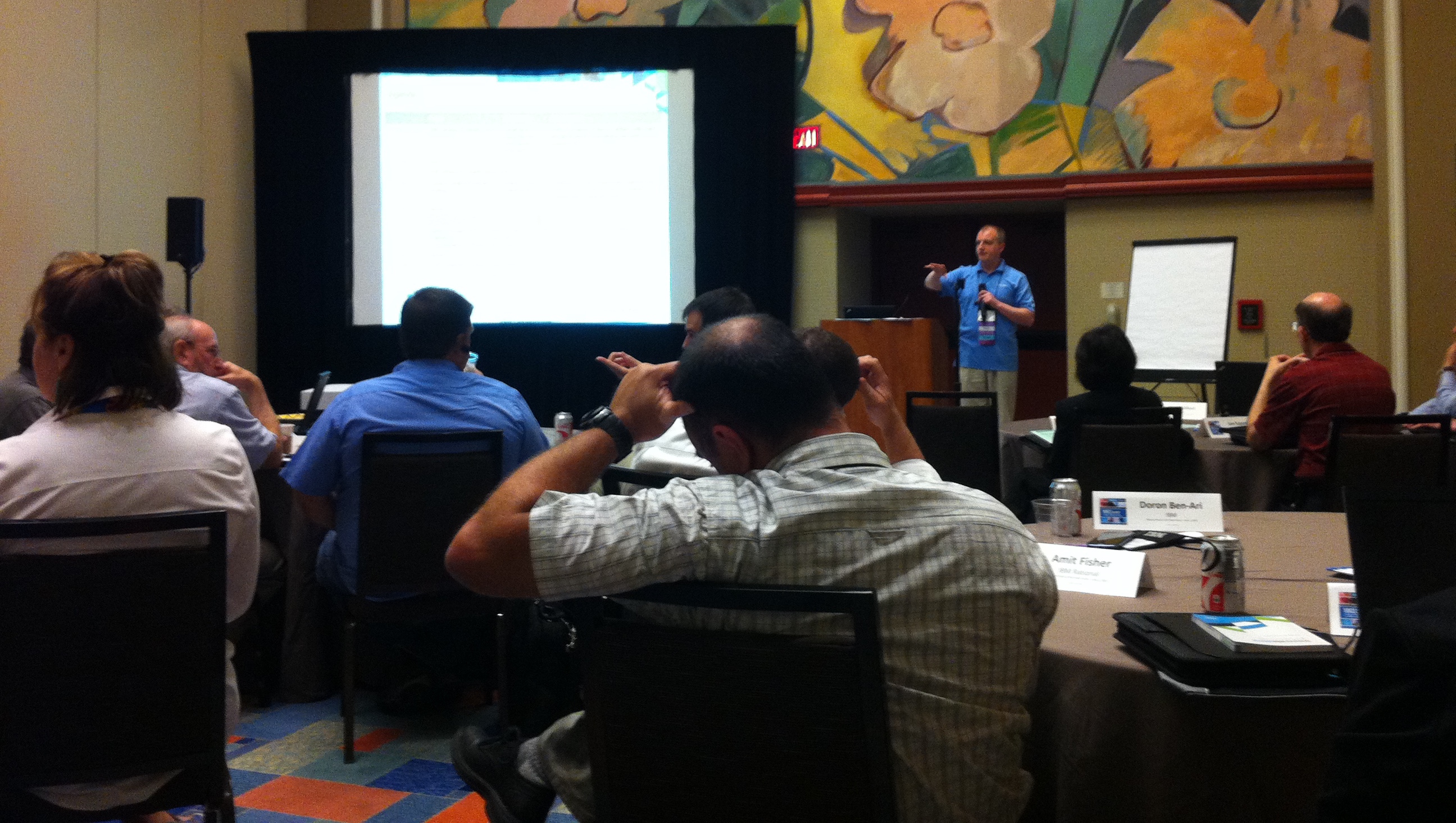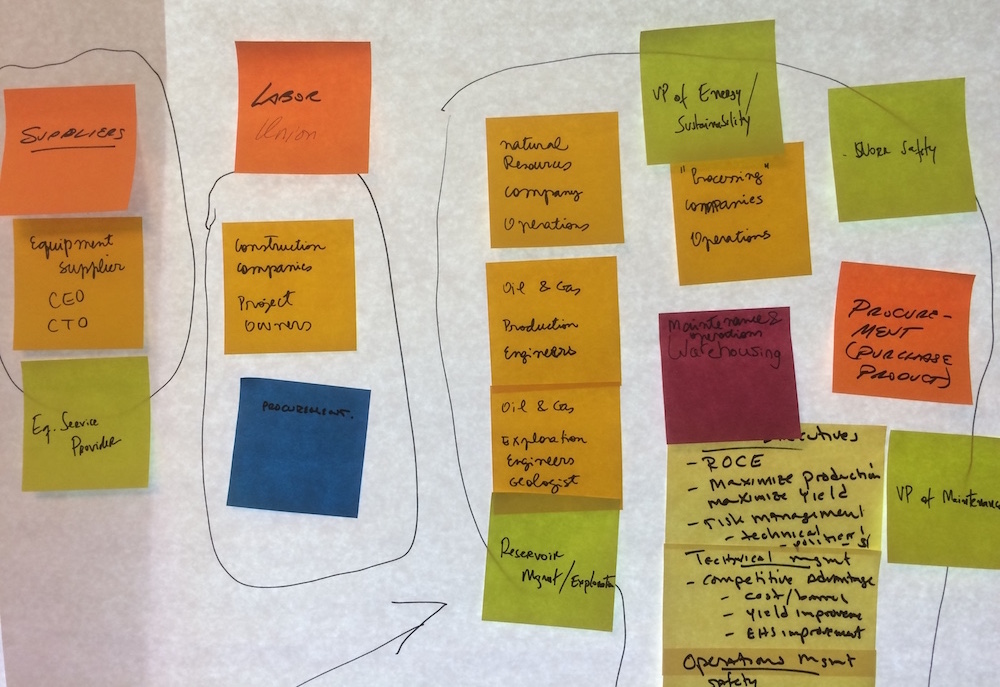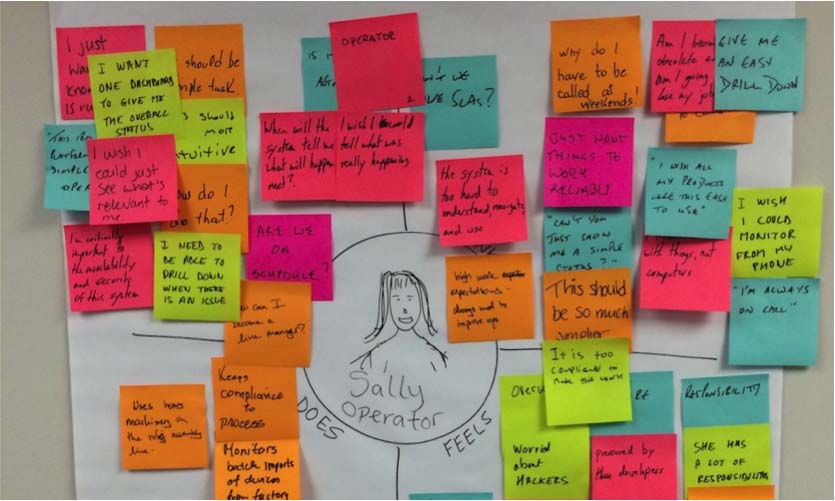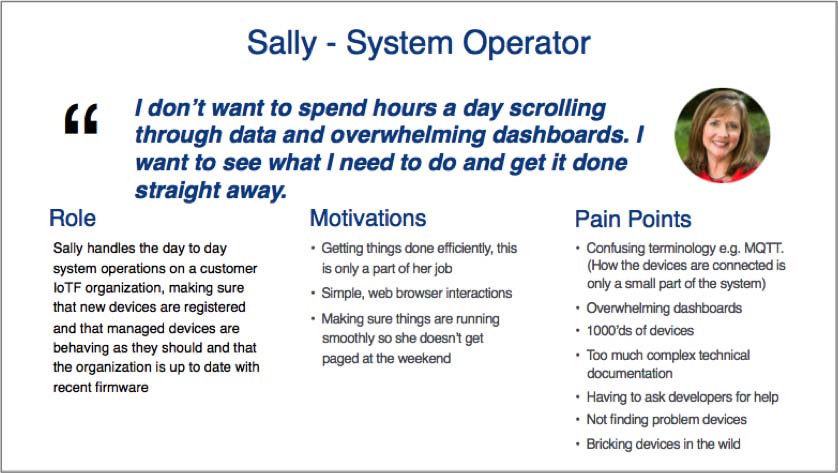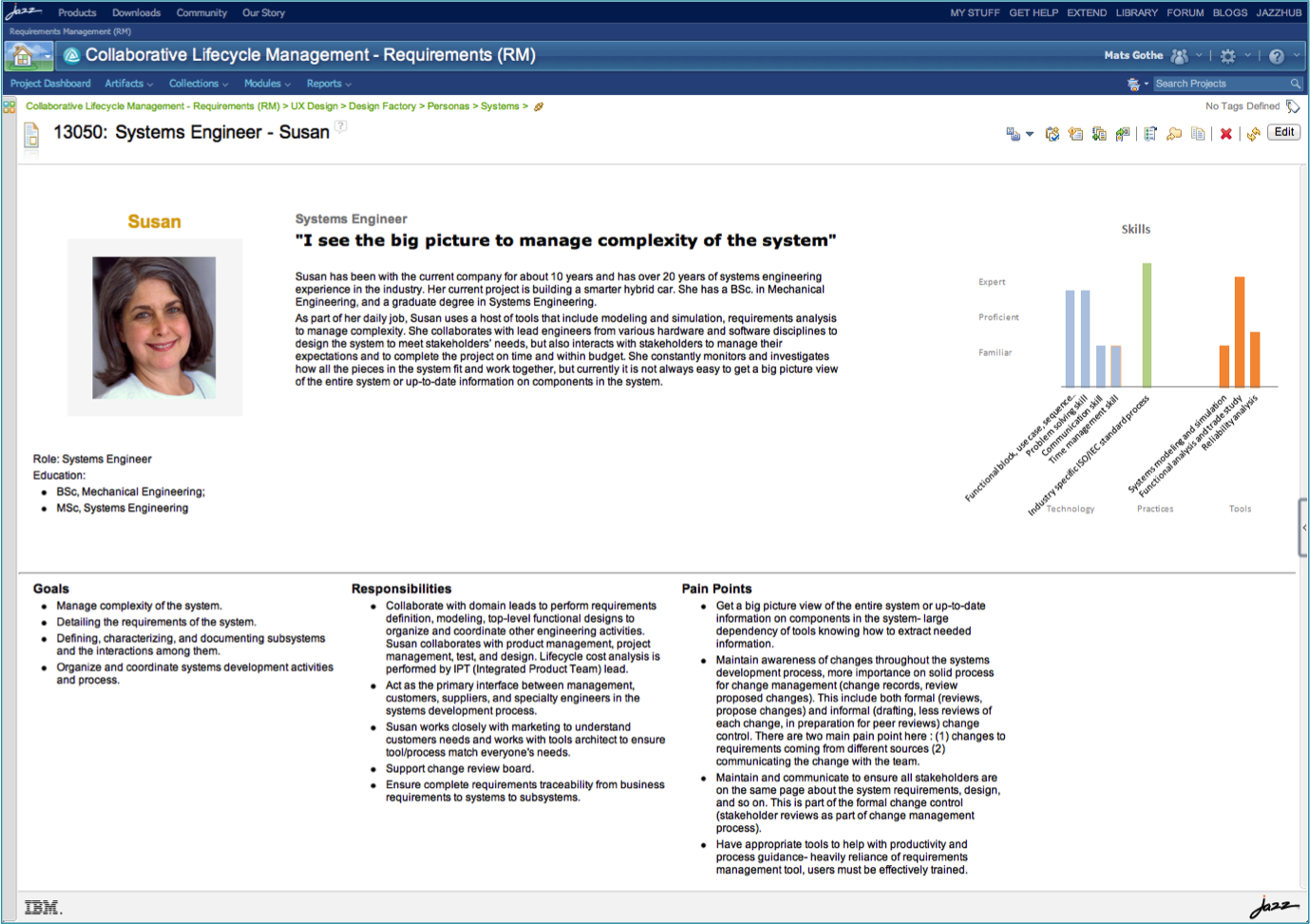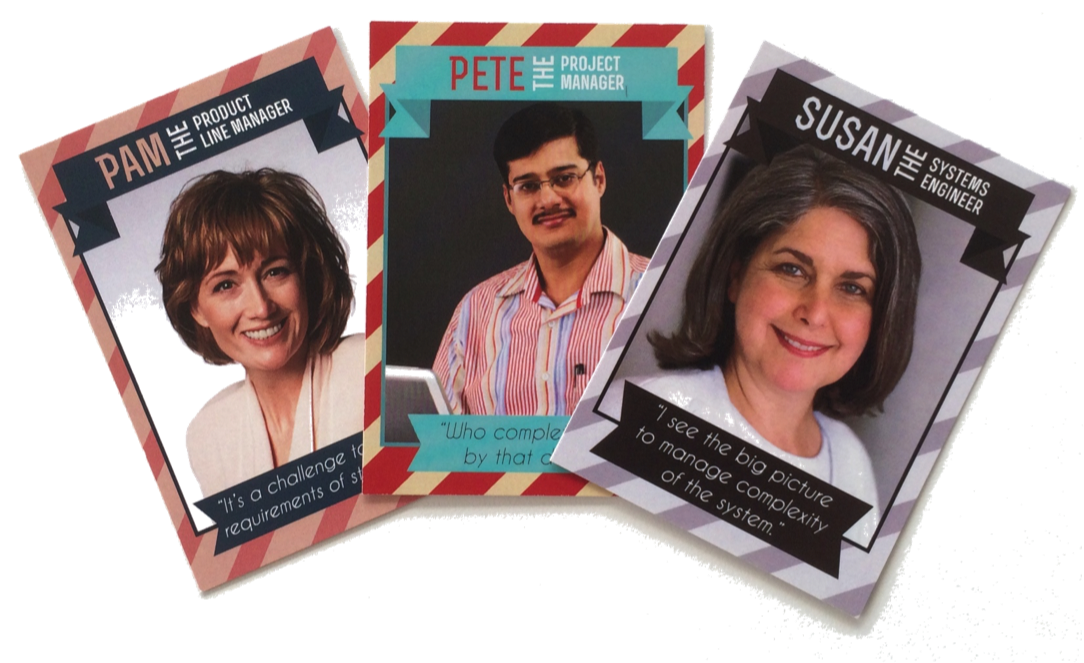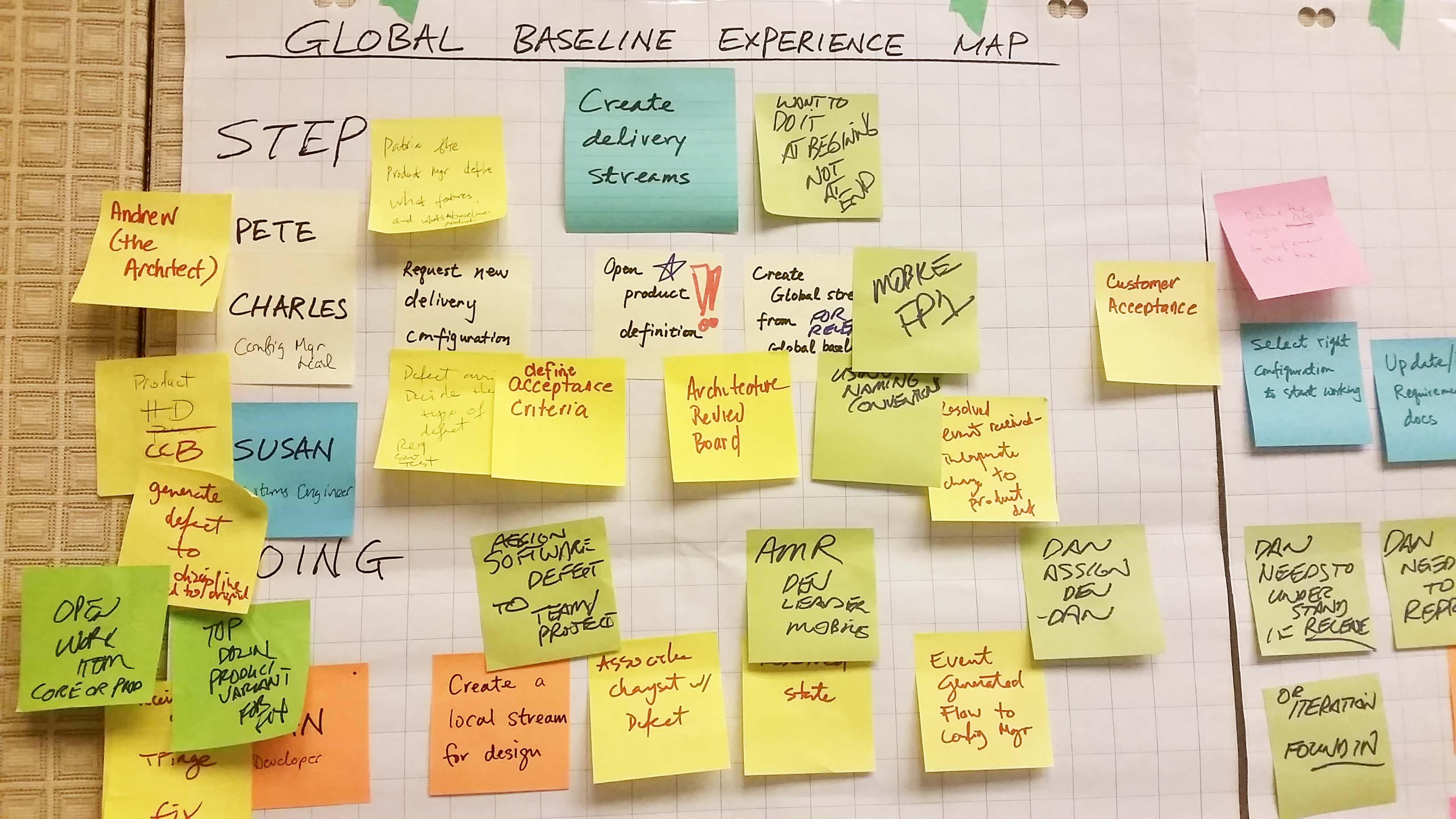Workshops
Working with a group of users is an effective way to make progress on conceptual and detailed design. Such workshops run from 2h to 6h using the Stakeholder Map, Empathy Map, Prioritisation, and Experience Map tools. Workshops quickly bring together teams and team members in a creative environment.
Design Studios
At IBM conferences like Innovate, Interconnect, and Insight we often get the opportunity to run design labs. These labs can support the design lifecycle we use both at early phases of Understanding, as well as later phases where we Prototype or Evaluate. The example below is from the three design studio labs in 2014 where we researched the PLE solution.
View the material from Designing User Experience Concepts in the Multi-Stream Configuration Management lab at Interconnect 2015.
1-1 Interviews
Sitting down with a client in a 1-1 interview will generate essential research information. Shadowing a user is another way to observe the as-is workflows and pain points.
I favor a style of dialog using a whiteboard to capture workflows and artifacts. This benefits my graphical way of thinking and engages the client. The sketches can easily be an overview where pain points can be identified. What works really well (tagged green), and what does not work that well (tagged orange/red).
Stakeholder Maps
Stakeholder maps are a great way to get started with a new group of clients, or a client team. It makes attendees start standing, ideating, talking, and telling. It generates a holistic view of the solution space and its stakeholders. It provides a mechanism to discuss and establish priorities and scope.
Empathy Maps
I use Empathy maps to capture the details of Stakeholders and transform them into Personas. An Empathy map is a great tool to capture how clients interact with a solution and their expectations as it captures what a persona Says, Thinks, Feels, and Does.
Personas
Empathy maps become the source for persona definitions. I often come across stakeholder that becomes variants of our more general personas. In such cases, I document this using “Also know as…”. It’s an act of balance in capturing important differences in personas and keeping a generalized level to make personas applicable across the solution and across industries.
Personas documented in the Requirement Management solution.
Sometimes we want to generate a bit of external nterest for personas. This is a cool set of trading cards we created for the Innovate conference using the Product Line Engineering (PLE) personas. These giveaways generate interest and conversations.
Experience Maps
Experience maps are a tool to outline a scenario. It captures the major and minor steps as the personas interact with the solution to achieve an objective. The example below is an experience map from PLE design on the steps to create a global configuration baseline. The experience map was created by the InnerCircle members across multiple industries at the IBM Innovate conference.
Learn more about IBM Design and IBM Design Thinking on ibm.com/design
